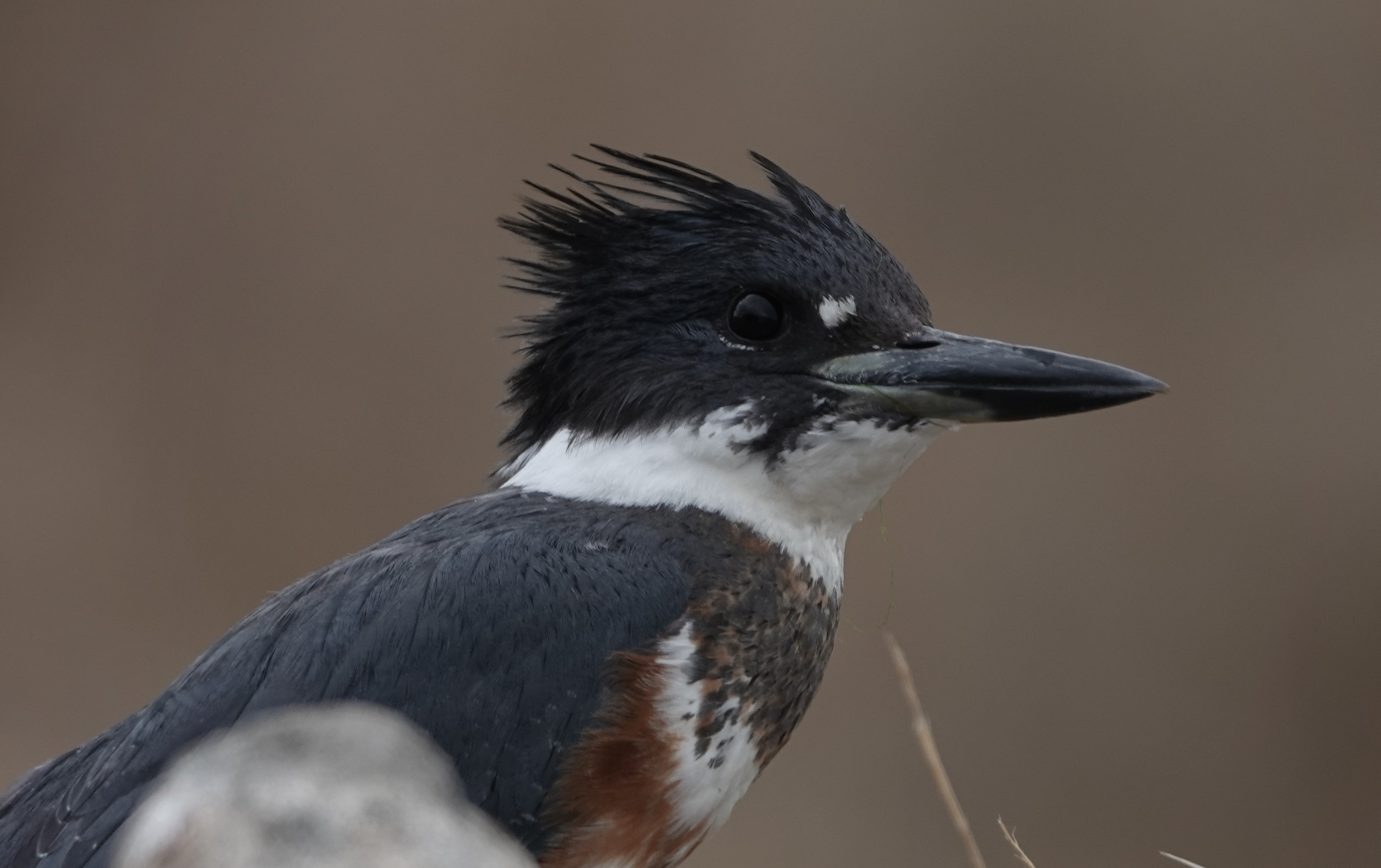Belted Kingfisher: 2023 ABA Bird of the Year
As 2023 winds down, it seems fitting that I share a few photos, recently obtained, of a somewhat elusive but common bird across the entire North America continent. Named this year's Bird of the Year by the American Birding Association, the Belted Kingfisher is an impressive presence just about anywhere there is a calm, clear body of water in which it can hunt, preferably with some cover at the edges and handy perches nearby.
Kingfishers may also hover or "kite" over a body of water in search of prey, which is a beautiful sight to see. (Shortly after the photo below was taken, this female kingfisher launched herself into the air and treated me to a dazzling display of kiting and diving! It seems I totally forgot all about trying to photograph that, though...)
Kingfishers require vertical banks for nesting, where they dig their nest burrows horizontally into the substrate, excavating three to six feet into the earth using their large bills as tools. The burrow ends in a small, unlined chamber, where the female lays and incubates up to eight eggs. Look for these cavities, which are a few inches in diameter, along any sheer earthen embankment, particularly where a body of water is nearby.
For years, I have tried to get a decent photo of one of these very cool-looking birds. And until just the other day, I had always been left with unsatisfactory results of distant birds. Invariably, it has been my experience that at the slightest hint of human presence, these flighty birds take off in the opposite direction, usually with a loud rattle of indignation thrown back at me over their shoulder as they bolt away.
But the other day, just as a gentle drizzle was beginning to fall over the gray grasslands, I spotted this female Belted Kingfisher along a small creek. She didn't seem to mind as I inched closer in my vehicle, with painstaking care lest I disturb her.
Belted Kingfishers are distinct birds and unlikely to be confused with any other bird in North America. (North America's only two other kingfisher species, the larger Ringed Kingfisher and smaller Green Kingfisher, have much more restricted ranges in the very southern corners of Texas and, in the case of the Green Kingfisher, Arizona.)
Kingfishers as a group are generally stocky, top-heavy-looking birds, with tiny feet, stubby tails and massively oversized bills. The Belted Kingfisher also sports a snazzy, shaggy crest, and gets its name from the rusty colored belt worn only by the female of the species.
As amazing as our North American darling of the kingfisher world is, the ABA's Bird of the Year is only one member of a very large family of kingfishers found on six continents around the world. Incredibly, we share our planet with over one hundred species of kingfishers, most of which are found in the Old World tropics.
 |
| Classic Belted Kingfisher shot: a little too far away, poised on a handy perch above the water. |
If you have an extra six minutes and forty seconds to spare, and are curious to learn more about the world's dazzling kingfishers, I highly recommend watching this video!! Then, go out and enjoy the beauty and sass of whatever kingfisher species is native to your local birding patch!












Comments
Post a Comment